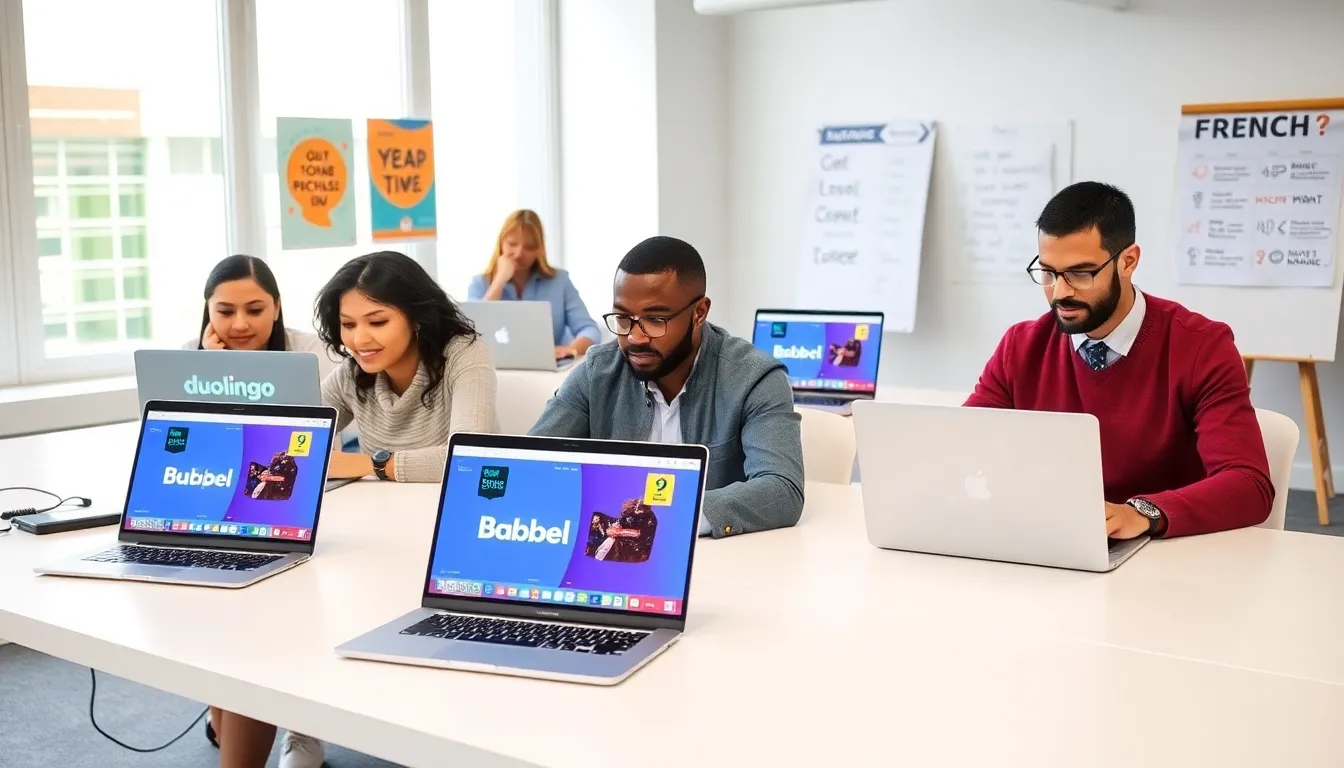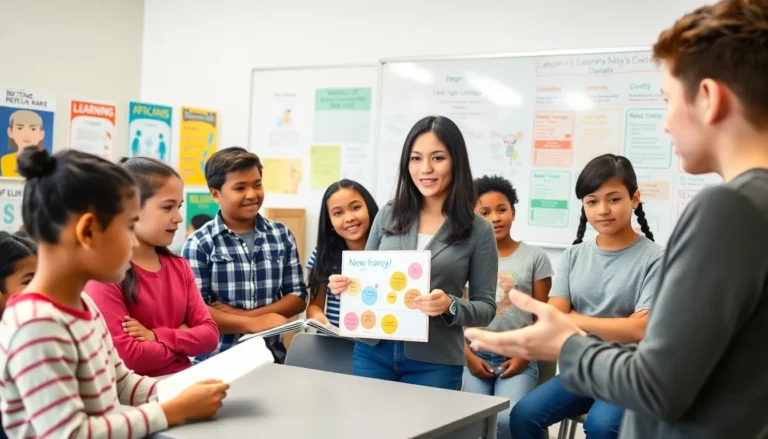Table of Contents
ToggleImagine speaking French fluently and impressing friends with your pronouncement of “Bonjour.” instead of simply waving at your croissant. Isn’t that enticing? Learning French opens up not only a world of cultural delights but also numerous professional opportunities. Now, whether you’re just starting or polishing your skills, quality resources are key. Here’s a witty yet thorough guide to help you navigate the delightful journey of learning French.
Online Courses and Platforms

The internet is a treasure trove of French language learning opportunities. Duolingo, for instance, gamifies the learning experience, transforming mundane vocabulary drills into a fun, competitive game. Many users have commented on how addictive it can be.
Babbel provides structured courses that focus on real-life conversations, emphasizing practical vocabulary and grammar needed for effective communication. With lessons ranging from 10 to 15 minutes, it accommodates even the busiest schedules.
Finally, Rosetta Stone taps into immersive learning techniques. Their method centers around contextual learning, allowing users to grasp the language naturally, much like they did as children.
These platforms often offer free trials, so testing the waters before diving in is a smart approach.
Popular Mobile Apps for Learning French
Smartphones are like mini-universities packed in your pocket, and numerous apps make learning French easier than ever. Memrise, with its quirky mnemonics, makes vocabulary stick in your memory like glue. Users rave about how these memorable phrases suddenly come alive in daily use.
Similarly, HelloTalk connects learners with native speakers through text and voice messages, giving an authentic language experience. Some even joke that it’s like bringing a piece of Paris to their fingertips.
If games are more appealing, Busuu integrates a community aspect, letting learners practice with native speakers while also earning badges for their achievements. That’s worth showing off, isn’t it?
Books and Textbooks for French Learners
Books remain an invaluable asset in any language arsenal. Classics like “Easy French Step-by-Step” guide learners through grammar frameworks with ease. Readers often praise its clarity and logical progression.
Next, “Fluent in French” isn’t just a book: it’s like a language partner. This resource focuses on conversational phrases and colloquialisms, making it a must-have for aspiring Francophiles.
Also, “French Grammar for Dummies” is not just for those who feel clueless: it’s also a fabulous reference book that demystifies tough grammar concepts with humor, making it a fun read too. That’s what they call killing two birds with one stone.
YouTube Channels and Podcasts
YouTube has become an unlikely hero in language learning. A channel like Francais Authentique focuses on immersion and listening comprehension, no grammar textbook required. Their engaging content keeps viewers captivated while they effortlessly absorb the language.
Podcasts are also pivotal for improving listening skills. Coffee Break French provides bite-sized lessons ideal for daily commutes, turning time-wasting into productive learning hours.
Another fantastic podcast, Pimsleur French, uses a unique audio method that requires listeners to participate actively, ensuring they don’t just hear but also practice. It’s believed that building muscle memory for words is akin to a workout session for the brain.
Community and Language Exchange Opportunities
Finding a study buddy can make all the difference. Platforms like Tandem connect learners with native speakers for real-time conversations. Imagine sharing laughs while struggling through mispronunciations together, it’s a shared experience.
Meetup groups for language exchange often foster relaxed environments, where attendees don’t just learn but also make friends over croissants and coffee. This organic interaction can spark genuine interest in understanding French culture alongside the language.
Also, some community colleges offer French conversation clubs, providing a physical space that invites practice and cultural exploration.
Immersive Learning Through Media
Diving into French films and music is an exhilarating way to speed up language comprehension. Watching classics like Amélie or La Haine can enhance speaking skills and expose learners to varying accents and slang. Netflix even offers subtitles in French, allowing viewers to read along as they watch.
Music is another fantastic tool. Listening to artists like Edith Piaf or Christine and the Queens turns language learning into a melodic experience. Singing along helps solidify vocabulary in an enjoyable context, turning tedious memorization into a vibrant experience.
Besides, engaging with popular French YouTube channels or TikTok creators can introduce casual, everyday language in a fun, relatable format.
Tips for Choosing the Right Resources
Selecting the right resource is crucial in any learning journey. First, assess what type of learner you are. Visual learners might benefit from apps and videos, whereas auditory learners could excel with podcasts or radio.
Next, consider your goals. If fluency for business is the target, formal courses may be essential. On the other hand, casual learners might enjoy a mix of practice and entertainment.
Finally, don’t hesitate to mix resources. Balancing apps, books, and community interaction can often yield the best results. The key is to stay engaged while making the process enjoyable.







